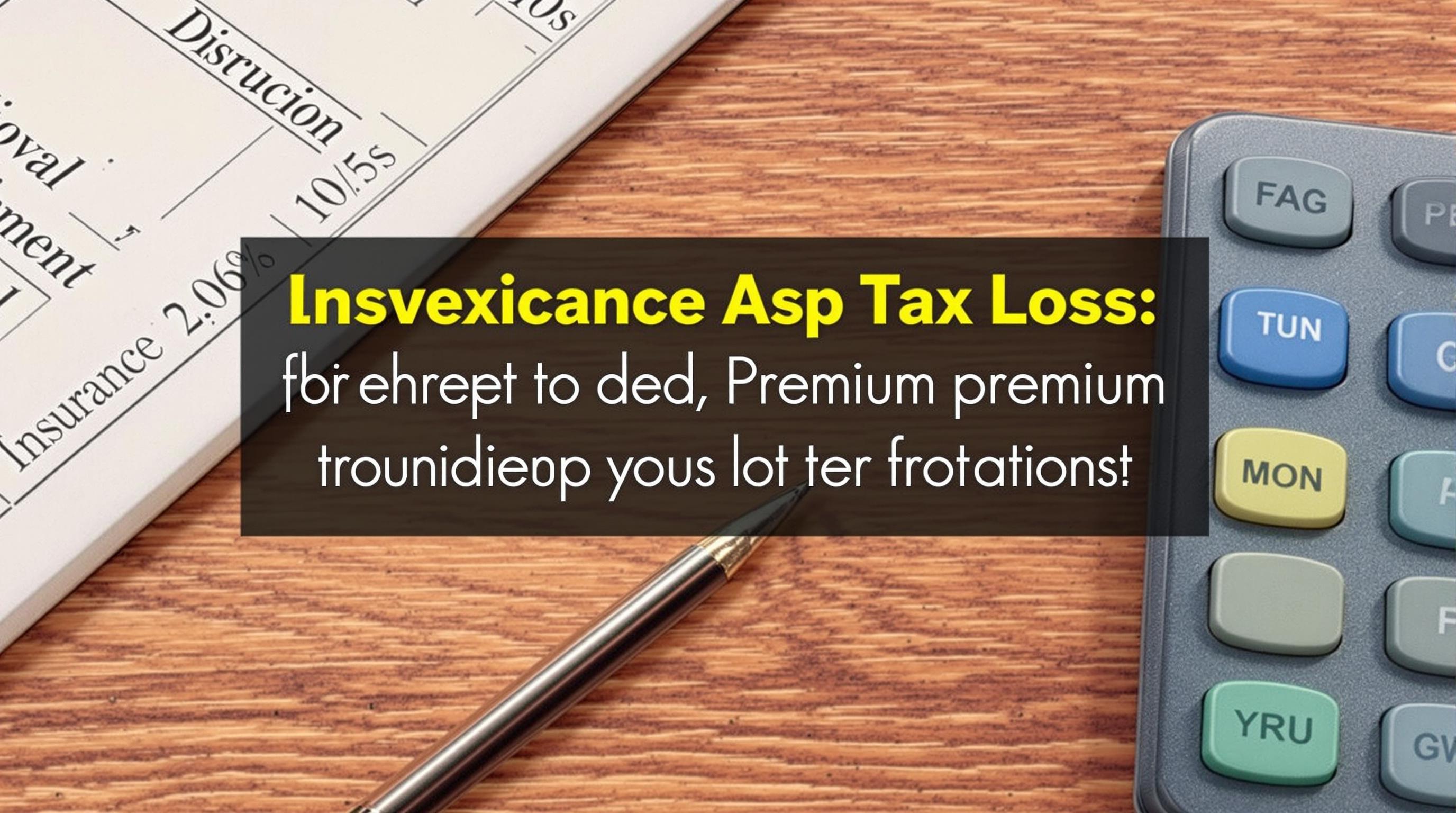Related Articles
- Top 7 Game-Changing Riders Released Since 2019 That Redefine How You Customize Your Life Insurance Coverage
- Top 5 Game-Changing Insurance Add-Ons from the Past Five Years Redefining Rider Benefits and Coverage
- The Silent Impact of Guaranteed Issue Insurance on Elderly Mental Health and Community Social Networks
- Top 6 Emerging Simplified Issue Policies Since 2019 That Redefine Risk and Flexibility for Modern Buyers
- How Changing Remittance Intervals Influence Insurer-Provider Partnerships in Healthcare Coordination
- How Seasonal Spending Cycles Secretly Shape Insurance Premium Timing and Consumer Choices
Top 6 Innovative Insurance Plans Launched Since 2019 That Drastically Alter Your Tax Strategy
Top 6 Innovative Insurance Plans Launched Since 2019 That Drastically Alter Your Tax Strategy
The world of insurance is evolving rapidly, introducing innovative plans that not only provide protection but also offer significant tax advantages. Here, we explore six groundbreaking insurance products launched since 2019 that have the potential to revolutionize your approach to tax strategy and financial planning.
A Conversational Look at Indexed Universal Life Insurance with Tax Benefits
Picture this: a life insurance policy that not only safeguards your loved ones but also lets your cash value grow based on the stock market's performance—without the risk of losing your principal. Enter Indexed Universal Life (IUL) insurance, enhanced in recent years to include novel tax advantages that savvy investors are buzzing about.
As a 28-year-old financial enthusiast speaking to a broad audience, I'd say the IUL plan's ability to grow tax-deferred and provide tax-free withdrawals under specific conditions is a game changer. According to LIMRA’s 2021 report, premiums for IUL products grew by nearly 15% from 2019, reflecting increasing interest among policyholders seeking both growth and tax efficiency.
Case Study: Sarah's Retirement Boost
Take Sarah, aged 45, who integrated an IUL plan into her portfolio in 2020. She used the policy's flexible premium payments and tax-free loan feature to supplement her retirement income, resulting in a 20% increase in net after-tax retirement funds compared to traditional savings alone.
The Rise of Hybrid Long-Term Care Policies Enhancing Tax Deductions
It's 2023, and long-term care insurance is no longer the cumbersome, costly product it once was. Hybrid plans that bundle life insurance with long-term care benefits have surged, allowing policyholders to access premium payments as tax-deductible medical expenses under IRC Section 213(d), provided they meet certain criteria.
For those over 50, these policies not only provide peace of mind but offer unique deductibility advantages. The National Association of Insurance Commissioners (NAIC) found that premiums for hybrid long-term care plans have increased by 18% since 2019, reflecting their growing popular appeal and tax planning relevance.
Formal Insight: Structuring Premium Payments for Maximum Tax Efficiency
Structuring your payments intelligently can be pivotal. Payments for these hybrid policies may be deducted as qualified medical expenses, reducing adjusted gross income, thereby potentially lowering the tax burden significantly. This is particularly beneficial for individuals subject to higher tax brackets who seek efficient wealth protection and transfer.
A Humorous Take on Short-Term Disability Insurance That Saves You Money
Imagine insurance that's almost like having a financial superhero for your paycheck—ready to swoop in if you’re temporarily benched by illness. Short-term disability insurance (STDI) plans revamped since 2019 now have features that allow premiums to be paid pre-tax through employer-sponsored cafeteria plans.
While it sounds like a plot twist in a superhero movie, the reality is that paying for STDI pre-tax means less taxable income, more money in your pocket, and a safety net when life throws curveballs. According to the Bureau of Labor Statistics, about 70% of private industry workers had access to paid disability benefits in 2022, a number steadily rising and showing the relevance of these improved plans.
Storytelling: John’s Journey with a Cash Value Annuity Tax Solution
John, a 62-year-old retiree, found his beaten retirement nest egg revitalized by a new generation of cash value annuities that emerged post-2019. These annuities offer tax-deferred growth and the option to withdraw funds through cost basis and loan provisions that sidestep traditional income taxes.
His accountant suggested this plan after John's RMDs from his traditional IRA began increasing his taxable income. By converting a portion of his retirement funds into a cash value annuity, John effectively managed his tax bracket, lowering his federal taxes by roughly 14% annually while maintaining liquidity.
Persuasive Advice: Why You Should Consider Variable Universal Life Policies Now
Variable Universal Life (VUL) policies, revamped and refined recently, combine flexible premiums with investment choices across various subaccounts. With features such as tax-free loans and withdrawals, these policies can double as powerful tax shelters and investment vehicles.
For younger readers aged 25-40, VUL offers a long runway to accumulate tax-advantaged wealth, notably outperforming some traditional investment accounts when taxes are taken into account. A 2022 study by the American Council of Life Insurers found that policies with investment options saw growth rates up to 8.5% annually, net of fees, enhancing their appeal for proactive tax planning.
A Statistical Snapshot: The Impact of New Insurance Plans on Tax Burdens
Recent data from the Tax Policy Center suggests that families incorporating innovative insurance strategies can reduce their effective tax rates by an average of 3-5% annually. This seemingly small window translates to thousands of dollars saved and a more robust financial future when compounded over time.
Casual Commentary on Group Life Insurance with Enhanced Tax Deferral
Group life insurance basics got a facelift starting 2020, with new provisions allowing employees to defer income tax on employer contributions exceeding previous limits under Section 79 of the IRC. This means more coverage with less taxable kink in your financial armor.
Imagine your employer pitching in a bit more to your life insurance pool, and you don’t get hit by an extra tax bill! It's the kind of upgrade from the "meh" world of benefits to the "wow" realm of smart tax management.
Final Thoughts: Integrating Insurance Into Your Tax Strategy
Ultimately, these innovative insurance plans launched since 2019 offer more than protection—they provide a strategic toolkit for reducing tax burdens and boosting financial flexibility. From young professionals looking to build tax-efficient wealth to retirees managing income streams, understanding and leveraging these options can spell the difference between financial stress and security.
Consulting with a knowledgeable financial advisor who understands the latest insurance innovations is crucial. As Elizabeth, a 52-year-old history buff turned financial writer, I encourage readers to delve deep, ask questions, and embrace these cutting-edge tools to refine your tax strategy and safeguard your future.
Sources:
- LIMRA, Life Insurance Sales Report, 2021
- National Association of Insurance Commissioners (NAIC), Hybrid Long-Term Care Insurance Trends, 2022
- Bureau of Labor Statistics, Employee Benefits Survey, 2022
- American Council of Life Insurers (ACLI), Investment-Linked Life Insurance Results, 2022
- Tax Policy Center, Tax Burden Analysis, 2023




